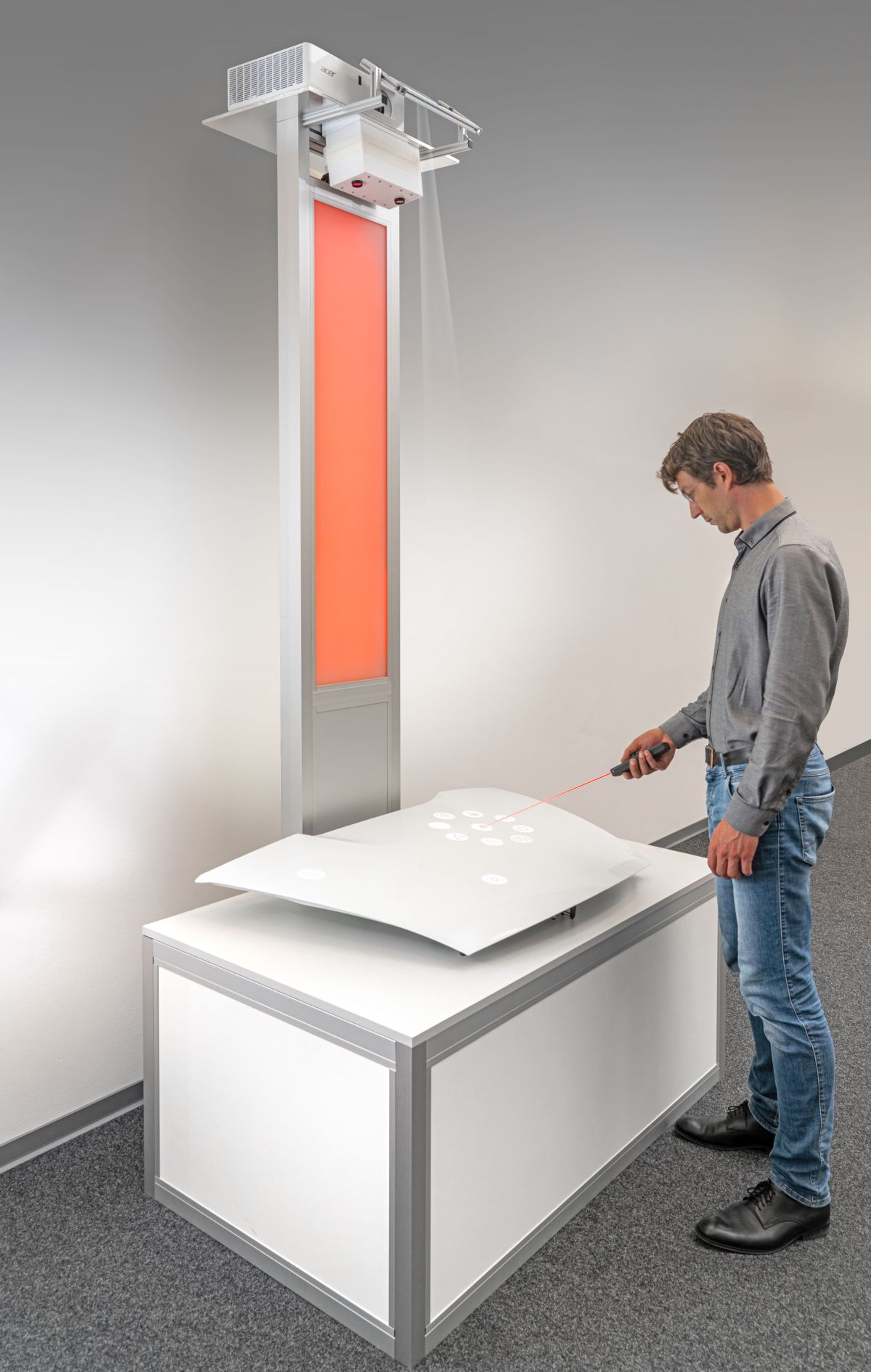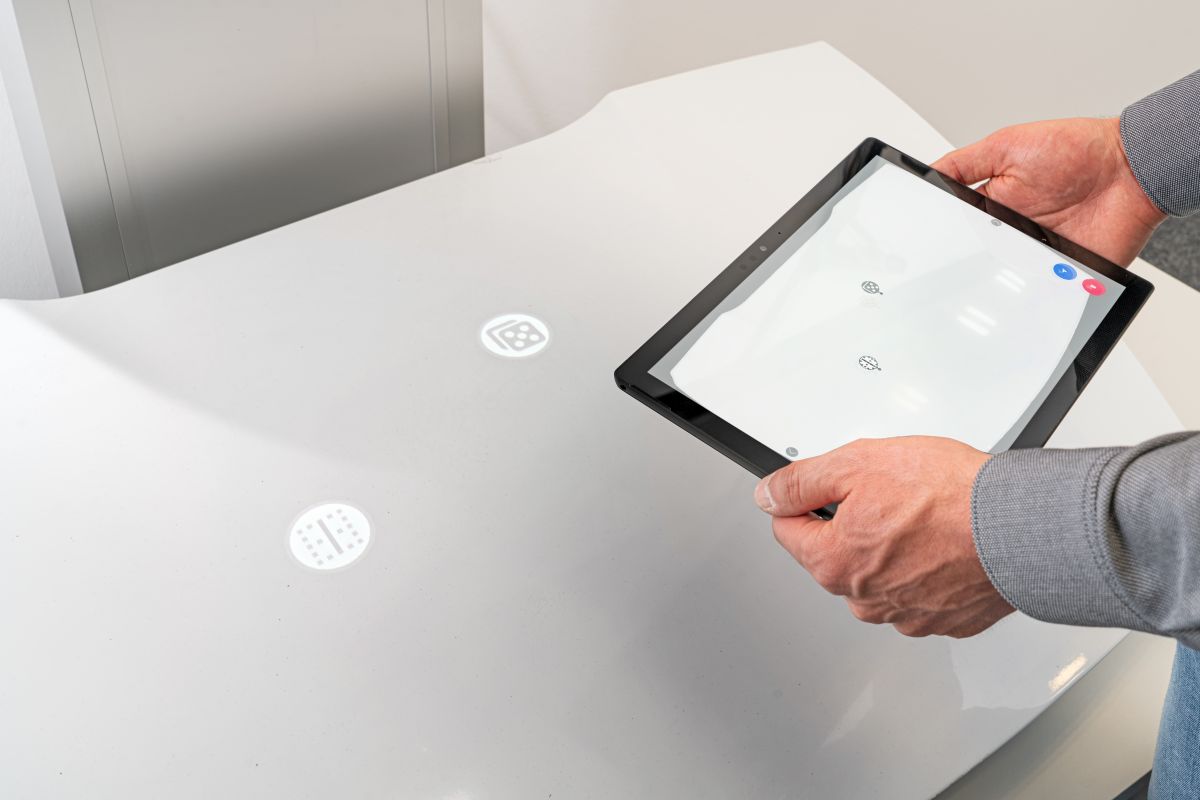Description of the product
QSelect is an innovative system for digital defect documentation of painted and unpainted components or other products that are to be inspected and documented for defects.
Features
Particularly in the production of aesthetically sophisticated products, visual and haptic quality assurance for paint and surface defects represents an important step in the process chain. While the inspection is carried out on the component itself, any defects are often documented by hand, on a nearby PC or by means of mobile handheld devices such as smartphones or tablets. In all three cases, documentation is disadvantageous and imprecise. While handwritten documentation or input at a PC workstation requires each error to be transferred from memory, handheld devices allow immediate error logging. However, marking the error location on a small screen or on a sheet of paper can lead to imprecise error information, which in the worst case leads to delayed rework.
Defect documentation on and on the component itself has many advantages: inspectors can make markings during the inspection and thus save time. Defects are precisely documented in three dimensions. Direct logging during the inspection process - instead of downstream at a workstation - successfully avoids defect slip.
QSelect makes this possible by placing the component in a fixture that is captured from above by a camera. The camera is used to observe and automatically evaluate all inspection processes. A microphone array installed in the station responds to voice input, and AR glasses or a projector also mounted above the station visualizes the assistance system directly on the component.
In order not to slow down the inspection process, QSelect attaches great importance to intuitive operation and, thanks to this equipment, allows defect input by means of voice recognition and pointing gestures and even a laser pointer. While speech recognition is particularly suitable for specifying the defect type and the pointing gesture for specifying the defect position, the laser pointer, thanks to built-in buttons, allows both a highly precise position specification and the selection of further defect attributes, such as defect type, defect degree, etc.
The underlying defect types in QSelect are easy to configure through an intuitive web interface. In principle, any number of defect types and more extensive attributes can be added - even depending on the component type or their order and naming per employee.
Documented defects can be stored on an existing 3D model of the component - in rework processes, the defects can thus be visualized quickly and unambiguously at the respective position. Thanks to the digital and precise storage of all defects and prevention of defect slippage, statistical evaluations of defect frequency and defect clusters occurring during production are also possible for the first time. In addition, the AR display on the component can be used to efficiently direct the inspector's gaze - e.g. to surface areas that were predominantly marked as defective in previous shifts.
QSelect integrates seamlessly into existing processes and ensures digital, precise defect documentation - intuitively directly on the component.
 Fraunhofer Institute of Optronics, System Technologies and Image Exploitation IOSB
Fraunhofer Institute of Optronics, System Technologies and Image Exploitation IOSB 


